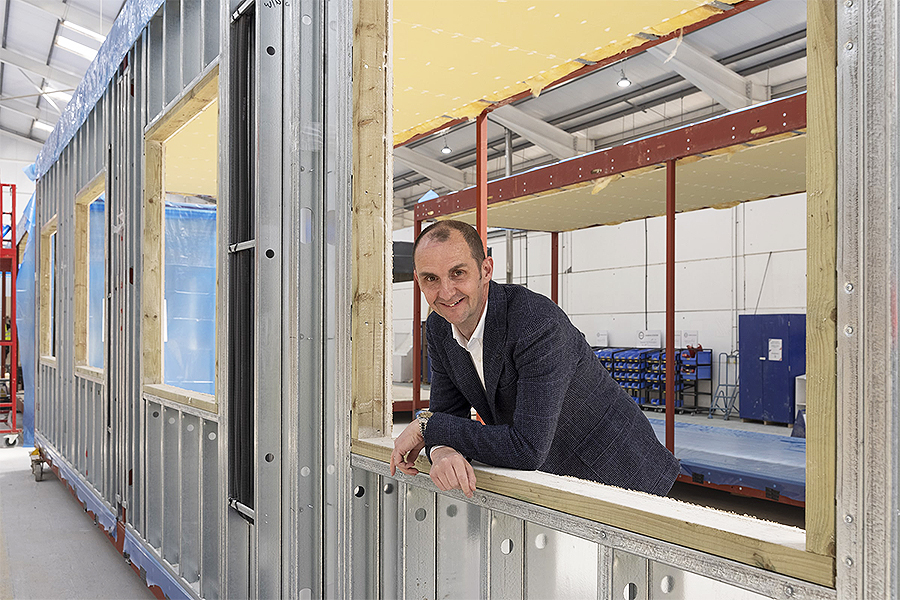The chancellor’s Autumn Statement in November put growth at the top of the UK’s economic agenda. As such, the pressure is on for public sector organisations to expand their facilities in order to accommodate the increasing number of services they aim to deliver.
Premier Modular
Whilst inflation is beginning to fall from the highs experienced last year, public sector organisations still face the sizeable task of managing their Capital Expenditure (CapEx) and Operating Expenditure (OpEx) budgets if they are to broaden their site infrastructure and drive growth.
When it comes to procuring new buildings, the agility and cost certainty afforded by rental modular solutions is a welcome advantage. Unlike permanent buildings, the production and lease of rental modular facilities can fall under an organisation’s OpEx budget rather than its CapEx budget, allowing the purchasing organisation to pay for rental solutions consistently and within the boundaries of their available funds.
Manufactured at speed and available for lease in a timeframe that suits the organisation, rental modular solutions afford public sector organisations the short- and long-term flexibility to use their CapEx and OpEx budgets effectively for the greatest impact.
Budget barriers
CapEx and OpEx budgets are staples of any public sector organisation’s financial toolkit. Where the CapEx budget is typically dedicated to purchasing, maintaining or repairing fixed assets, such as buildings, the OpEx budget funds the everyday operations of a given organisation. Both involve organisations spending to satisfy the numerous demands and expectations of their many stakeholders but come with a number of barriers that can be difficult for organisations to overcome.
For instance, projects funded by CapEx budgets, such as the expansion of a university estate, often require a larger initial financial investment, more labour and more time than the smaller initiatives funded by OpEx budgets. More ambitious projects often necessitate greater stakeholder engagement and require more resources to undertake – a factor that increases project overheads and makes the simultaneous management of multiple projects on one budget incredibly difficult. Projects funded by OpEx budgets equally pose a number of obstacles for public sector organisations to navigate; they can be dependent on uncertain public sector factors, such as the number of monthly users for a particular site or service.
Flexible solutions
Modular buildings can support a range of public sector building projects, including the provision of educational facilities and healthcare spaces, such as ward space and assessment units that support the NHS’ growing demand for capacity. Modular site and welfare facilities, including canteens, offices and changing rooms, can be provided in line with exacting specifications to ensure rental facilities are equivalent to the quality of their permanent counterparts.
Depending on the source of funding available, organisations may be unable to purchase buildings upfront or may choose the benefit of added future flexibility. To help with this, rental solutions offer flexibility and cost certainty, enabling public sector businesses to procure buildings for a fixed cost that does not fluctuate throughout the lease period. This is particularly beneficial for organisations navigating periods of increased inflation and interest rates – a perk when utilising CapEx budgets that are sensitive to change during and after a period of economic instability.
To this end, rental modular solutions will remain relatively unaffected by future economic instability and can be leased over a longer timeframe to align with monthly budgets. An additional benefit of this route is the futureproofed flexibility gained; providing both additional options of repurposing a building for an alternative use, or indeed relocating to a more beneficial location. The offsite manufacturing of modular buildings equally helps to reduce costs for the end user too; the short installation time of modular buildings minimises labour costs, maximising the efficient use of resources spent on the project’s delivery.
In some cases, rental modular solutions are a self-funding mechanism that can be utilised for organisations with limited funds. For instance, in the NHS, healthcare services are dependent on the number of monthly users. If healthcare buildings increase their monthly service users, their OpEx budgets will rise accordingly. In turn, this will provide organisations with more funding to rent buildings, providing increased space for more patient throughput and a continuous cycle of increased users and available operational funding.
Flexible funding secured through national procurement frameworks further facilitates the acquisition of rental modular buildings in line with fixed CapEx and OpEx budgets. Frameworks, such as LHC Modular Buildings Framework, NHS Commercial Solutions and Department for Education Condition Improvement Fund, enable public sector organisations to confidently invest in credible suppliers and ensure the building solutions they obtain are completed to a high standard.
Cost-efficient collaboration
As well as providing cost efficiency to support procurement budgets, modular solutions offer bespoke rental collaboration between manufacturers and organisations, from design to handover. This allows for proactive site visits that will inform specific public sector requirements and optimise project management and logistical planning to minimise overall project time and ensure budgets are respected.
Above all else, rental modular buildings help organisations to create a comfortable and effective environment for working, living and learning, without compromising on quality.
This type of building solution allows organisations to obtain the facilities they need, at a price they can afford, enabling the wider public sector to drive growth and fulfil stakeholder needs in the long term.

Mark Rooney is Hire Divisional Director at Premier Modular












